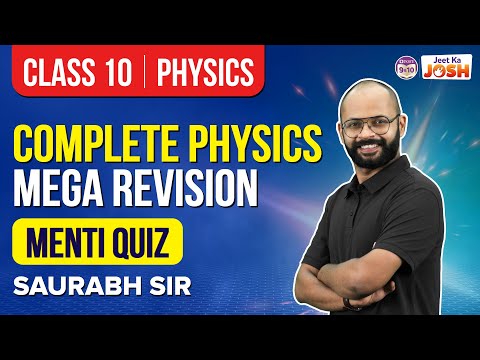Class 10 Physics Chapter 14 Sources of Energy MCQs are provided here with answers. In this chapter, you will learn about the various forms of energy, like renewable sources of energy and non-renewable sources of energy. These MCQ questions are designed as per the latest CBSE syllabus and NCERT curriculum. Solving these chapter-wise MCQs will help students to score good marks in the final exam. Sources of Energy Class 10 Science Chapter 14 MCQs are prepared for a better understanding of the concept. It allows students to test their knowledge and answering skills in the given time frame.
The below video provides the complete CBSE Class 10 Physics Quiz

MCQs on Class 10 Physics Chapter 14 Sources of Energy
Check the multiple-choice questions for the Class 10 Physics Chapter 14 Sources of Energy. Each MCQ will have four options here, out of which only one is correct. Students have to pick the correct option and check the answer provided here.
Download Chapter 14 Sources of Energy MCQs PDF by clicking on the button below.
Download PDF
1. Nuclear energy is a ______________.
- Renewable sources of energy
- Non-renewable sources of energy
- Neither renewable nor non-renewable sources of energy
- None of these option
Answer: (b) Non-renewable sources of energy
Explanation: The resources that cannot be renewed once they are consumed are called non-renewable sources of energy.
2. Which among the following causes environmental pollution?
- Biomass
- Solar energy
- Coal
- Wind
Answer: (c) Coal
Explanation: Since coal is a non-renewable source of energy, it causes pollution.
3.______________ is used in thermal power plants.
- Uranium
- Thorium
- Air
- Fossil fuels
Answer: (d) Fossil fuels
Explanation: Oil, coal, and natural gas are collectively known as fossil fuels. They are used in thermal power plants.
4. Why is biogas considered a ‘good’ source of energy?
- as it burns with releasing smoke
- as it burns without releasing smoke
- as it burns without oxygen
- None of these option
Answer: (b) as it burns without releasing smoke
Explanation: biogas is efficient and does not contribute to pollution. Hence, it is known as a good source of energy.
5. The component of biogas is ______________.
- Uranium
- Thorium
- Methane
- Hydrochloric acid
Answer: (c) Methane
Explanation: Methane is the component of biogas.
6. The gravitational pull of ______________ causes the rise of sea-water during high tides.
- Venus
- Pluto
- Sun
- Moon
Answer: (d) Moon
Explanation: Moon’s gravitational pull is responsible for the rise of sea-water during high tides.
7. The power generated in a windmill ______________.
- depends on the tower height
- depends on wind velocity
- does not depend on wind velocity
- depends on the trees surrounding it
Answer: (b) Depends on wind velocity
Explanation: Wind velocity is responsible for the power generated in windmills.
8. Carbon dioxide causes ______________.
- White house effect
- Red house effect
- Blackhouse effect
- Greenhouse effect
Answer: (d) Greenhouse effect
Explanation: Carbon dioxide, methane, and nitrous oxides are some of the gases which cause the greenhouse effect.
9. Non-conventional sources of energy are ______________.
- Exhaustible
- Inexhaustible
- Neither exhaustible nor inexhaustible
- Too expensive
Answer: (a) Inexhaustible
Explanation: Non-conventional sources of energy are inexhaustible, pollution-free, and less expensive.
10. Biogas is also known as ______________.
- Fuel gas
- Ethane gas
- Gobar gas
- Petroleum gas
Answer: (c) Gobar gas
Explanation: Gobar gas is also known as biogas. It is commonly used for cooking purposes and is also used to produce electricity.
The below video helps to revise the entire chapters of Class 10 Physics

Stay tuned to BYJU’S and Fall in Love with Learning!
Comments